Whence ni-hon?
Continuing to plunder my Quora answers. Here, the question was why 日本 did have the reading ni-hon beside nippon (or *nichi-pon, as the asker suggested).
The case of the Chinese mummy
A quora reprint, answering the question why “mummy” is 木乃伊 in Chinese. It’s a phonetic transcription, of course. The shape is peculiar, though.
The Chinese etymology post …
At different times, people on Quora have asked about Greek, Indian or Japanese words in Chinese. Being the curious type, I put little answers together for each, which I am now combining in the post below.
First off – Greek
Next – Sanskrit
I can only speak for the Sanskrit -> Chinese direction.
(1) There are some loan words, most referring to terms in the Buddhist religion (like 僧 monk, from sangha 菩薩 Bodhisattva, 羅漢 Arhat), but a few made it into everyday language like 剎那 chànà moment (ksana) or 蘋果 píngguo apple (bimba-fruit). For some, it is easier to see the connection in Middle Chinese, e.g. the name of the Buddha himself fó, originally something like biut. Other terms have been translated like 大乘 mahayana (literally: big vehicle), not sure if we want to count those, too ;-).
(2) The Chinese phonetic tradition; if you look at rhyme tables you will see that they are laid out in the same order as traditional phonetic descriptions in Sanskrit, going from voiceless/unaspirated [k] to voiceless/aspirated [kh] to voiced/unaspirated [g] and nasals for each group of initials. And the groups themselves either go from gutturals (k) to labials (p) or the other way round, as in the example below:
That’s a little too similar to be a complete coincidence ;-).
On a side note, that order k-ts-t-p was later imported into Japanese, as well – if you ever wondered why hiragana / katakana nowadays follow a completely different order from the Western alphabet, that is why: ka/ki/ku/ke/ko – sa/shi/su/se/so – ta/chi/ &c. (sa comes after ka because it was cha in oder Japanese, and ha used to be pa).
Finally – Japanese (-made characters)
Update – A grab-bag of mixed origins
- 駱駝 – not sure from where exactly, Wiktionary claims “xiongnu *dada”, but notice how all the sinoxenic pronunciations (incl. Vietnamese) have a c/g final for the first character (lac-da); Turkish has deve with many related words in central Asian languages and luò may have a stand-alone meaning, so perhaps only the tuo is borrowed?
- 葡萄 – Bactrian or Persian (so, IE); modern Persian bâde (wine)
- 檸檬 – maybe Sanskrit (nimbū), Persian limu(n), Arabic laymun; I doubt the Sanskrit theory here … where would the final nasal in -meng have come from?
What are the key elements of minority language revival?
去聲-Derivatives – some new boxes!
多音字 – one of my favorite complications in learning Chinese. In another post, we have already dealt with 白讀 and 文讀 pairs like 白 [pai] / [puo] (from older [bak]), 色 [shai/se] (from older sek) etc. Today’s topic is another large group of 多音字: 去聲-derivatives. In other words, characters which can be read in two different tones, one of which is usually a 去聲, like for 教 or 要.
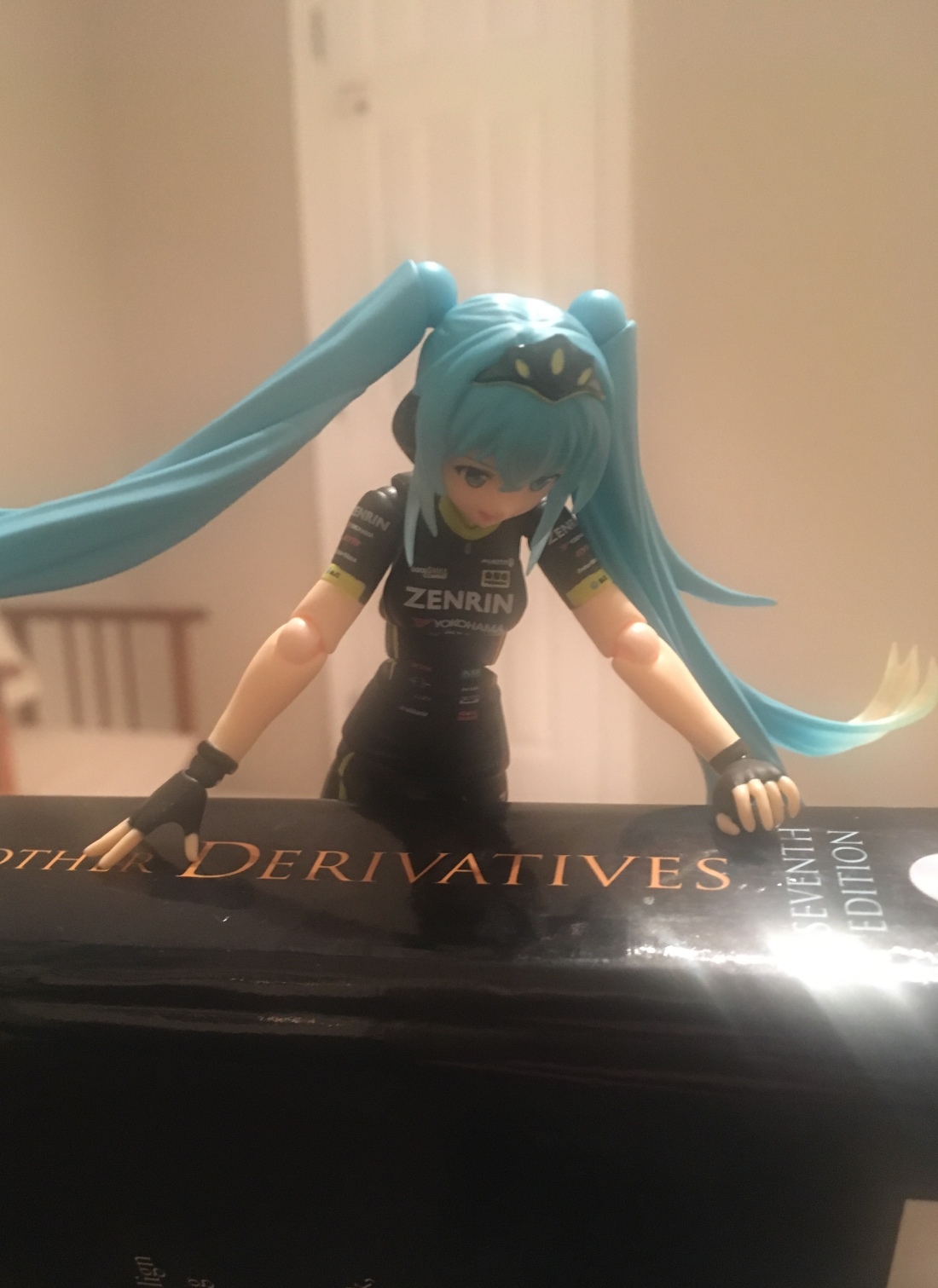
I am calling them derivatives because I assume that one of the readings is derived from the other in the same way that “to book” is derived from “a book” (more easily recognizable in German: Buch -> buchen), and that the 去聲 variant is usually the derived one.
Two questions suggest themselves: (1) how do I know and (2) why do I care?
As for question (1), I have observed that 多音字 come in three main types:
- 白/文 pairs, recognizable by their typical vocalism (mostly old 入聲 words)
- Same character, unrelated meanings (typically due to “simplification”, think 干)
- Two readings with related meanings but different tones – our topic today
For the last set, one of the two readings is usually a 去聲 , as in 王 king (P) and to be king (Q). Of course, I was not the first to notice that, see [1] for more on the topic. Given that the 去聲 is nowadays reconstructed as -s (and perhaps also -t) from comparative linguistics, the rule “QS = derived word” seems logically appealing. (Note: by rule I mean: for a 多音字; there are original QS words, like, well 去).
As for (2), why would I care? Well, I like to sort things into boxes. Rather than having to learn a bunch of unrelated phenomena, I would rather learn one general rule. E.g in English, if I know that to widen comes from wide, I have no trouble understanding loosen, strengthen, heighten – rather than one word, I have just learned a whole class. And I am hoping to do the same in Chinese.
Now, the example of “-en” derivations in English is a very fitting one, because (unfortunately) there is more than one “-en” class. There is the adj./noun => verb pattern we just discussed. But the same ending can also be used to make adjectives from nouns: gold-en, flax-en, earth-en, wood-en, wool-en … basically a whole host of materials can be turned into adjectives this way (but by far not all: there is no coal-en or steel-en). And then, of course, “-(e)n” is also used to form many past participles: risen, slain, sunken, seen, been. A quick analysis of English shows that there are at least 3 different classes of -n derivatives. So, is it even worth thinking about it? — I believe it is, because at the very least I now have three boxes that I can sort new word pairs into: they are either participles, adjectives formed from the names of materials or verbs made from nouns/adjectives by adding -en. Complicated, but better than complete randomness ;-).
So, on to find some new boxes in Chinese. Here is my working model (simplified for practical application from [1] and others):
(1) Noun => Q-verb
差: P: difference, Q: to differ from, to lack (P also be used as a verb “to differ”, see below)
釘: P: nail, Q: to nail
家: P: family, Q: to be given in marriage (written: 嫁)
王: P: king, Q: to be king
衣: P: cloth, Q: to wear
中: P: center, Q: hit the center
(2) Verb => Q-noun
藏: P: to conceal, Q: a storehouse
處: S: to be at, Q: place
擔: P: to carry/shoulder , Q: a load, a carrying pole
分: P: to divide, Q: part (cf. also 份; note: Q has voiced initial)
縫: P: to sow, Q: a seam
觀: P: to watch, Q: a watchtower, monastery
教: P: to teach, Q: teaching, religion (Qu-sheng also used for compound verbs, e.g. 教誨)
捲: S: to roll, Q: a scroll (卷)
空: P: to be empty, Q: spare time (also used for “to make empty” – see below)
量: P: to measure, Q: a measure, quantity (but also for “to assess” – one’s strength etc.)
磨: P: to rub, Q: a grindstone
難: P: to be difficult, Q: disaster
搧: P: to fan, Q: a fan (扇)
乘: P: to ride, Q: carriage
數: S: to count, Q: number
彈: P: to shoot, Q: a bullet
聞: P: to hear, Q: reputation
知: P: to know, Q: wisdom (智), wise [2]
傳: P: to transmit, Q: a record
Here one may argue for some words that the Q was the original, as the P or S has an additional 手 radical to distinguish the verb from the noun. Not necessarily, though – such radicals are often added by later generations “for clarification” and are missing in older text (think 捨/舎).
In any case, if you want to remember only one rule: “when in doubts, the noun is qù” covers the largest number of cases ;-).
(3a) Q-word with a “more restricted meaning”
差: P: to differ Q: to differ from, to lack
要: P: to demand, Q: to want
量: P: to measure, Q: to assess (also: “a measure”, see above)
少: S: to be few, Q: to be young
轉: S: to turn (trans.), Q: to revolve
(3b) Causatives (make somebody do something):
空: P: empty, Q: to empty
飲: S: to drink, Q: to give to drink
買: S: to buy, 賣 Q: to sell (note: character change)
散: S: be loose, Q: to scatter
But note 轉 as a counter-example above, where the qù-sheng is intransitive!
(4) Mixed bag of Qs
間: P: between, Q: gap, to separate
Of course, there are still pairs left which have nothing to do with 白/文 nor 去聲 derivatives, like 將, 沒, or 長. But classifying away a big part makes it easier to deal with the rest ;-).
References
[1] Guillaume Jacques. How many *-s suffixes in Old Chinese? . Bulletin of Chinese linguistics, Brill, 2016, 9 (2), pp.205-217
[2] Branner, D. (2002). Common Chinese and Early Chinese Morphology. Journal of the American Oriental Society, 122(4), 706-721. doi:10.2307/3217611
Additional examples from: http://news.sina.com.cn/o/2013-11-12/151928689420.shtml
.
Grand tour of the 音読み (2)
Moving on from the initials discussed in part 1, now it is time to look at the medials in Chinese and how they are reflected in the Japanese Onyomi.
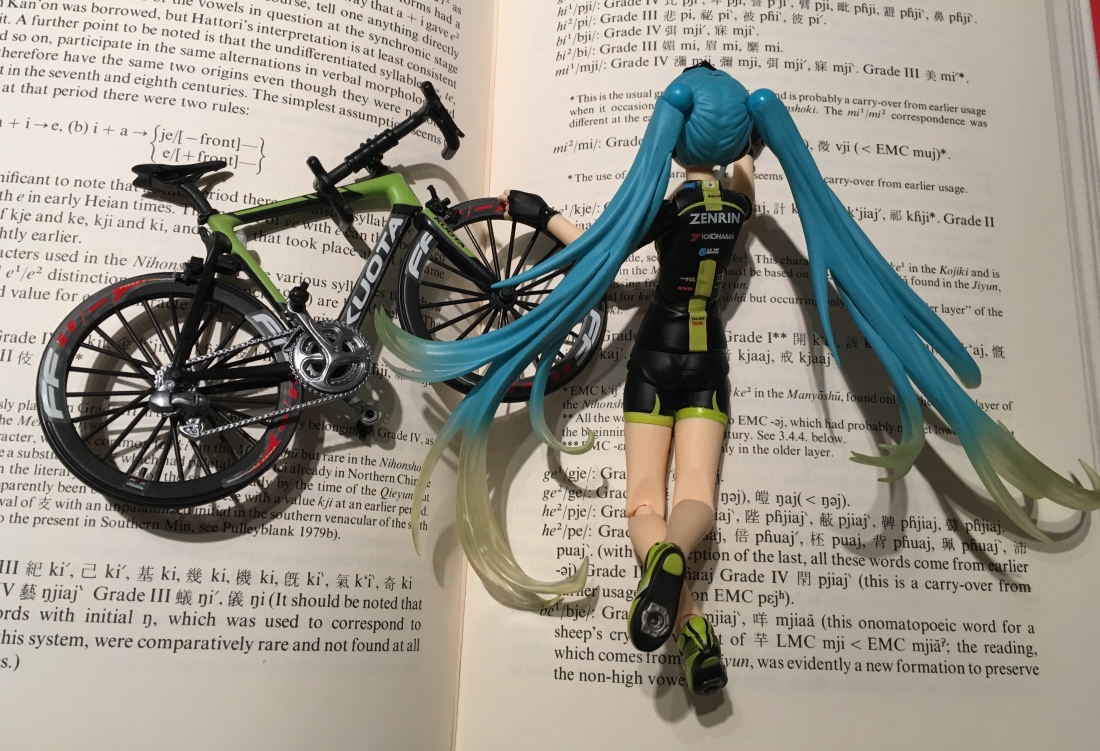
What are medials?
When talking about Chinese phonetics, we normally distinguish initials (36 of them in the case of Early Middle Chinese EMC) and finals. This is reflected in Chinese fanqie (反切) system to indicate spellings: 見 = 古電切 (same initial as gu, same final as dian => gian). The number of rimes varies over time – the 601CE 切韻 knows 193 韻 while the 廣韻 400 years later distinguishes 206 韻. How do you get that many finals when you have only 5-6 vowel nuclei and about as many possible final consonants (p, t, k, m, n, ng)? The answer is medials: -i- and -w- glides between the initial and the codas which lead to a significant increase in the number of possible syllables, changing /-an/ into /-an/, /-ian/, /-üan/ and /-uan/.
The photo below shows one of the 43 tables in the Qieyun (切韻 ) – the columns indicate the initials, the four major horizontal sections are the four tones, and within each tone you have four sub-sections, the so-called 等, called divisions or grades in English.
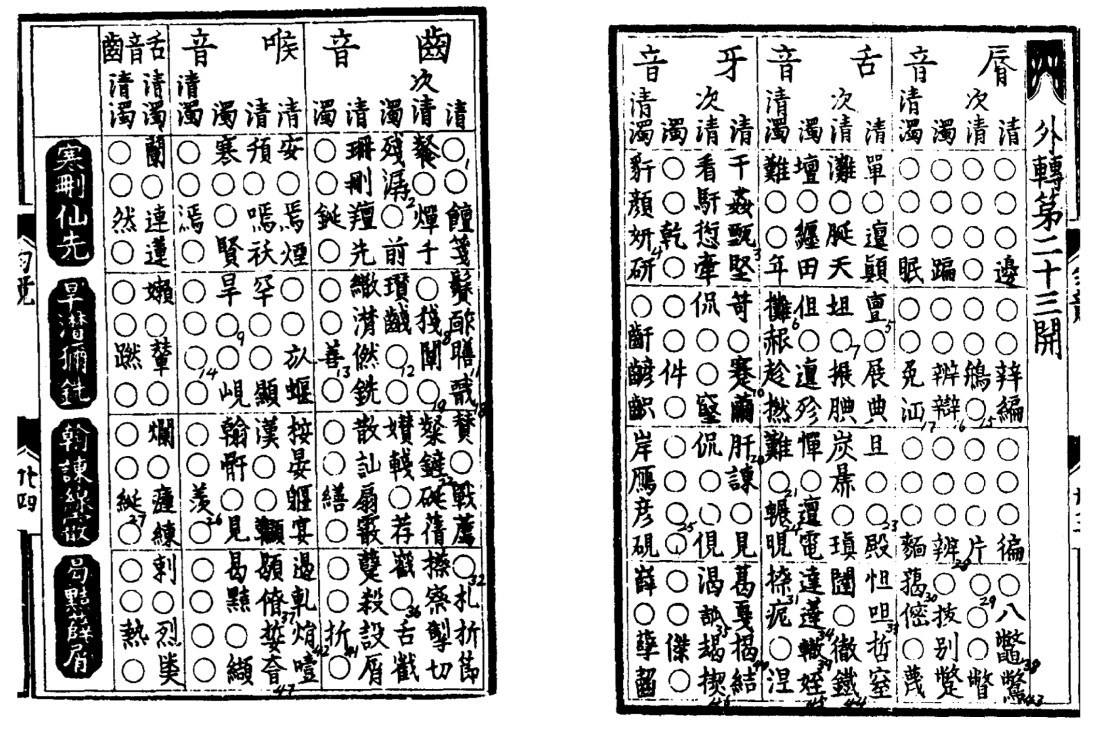
While the exact details of the grades are still in dispute, it is easy to see that they were related to glides (medials) and that they will be important understand how a Chinese syllable will develop in different fangyan and in Japanese:
| 等 | 字 | Tone | 官 | 粵 | 閩 | 吳音 | 漢音 |
| 開 一 | 干 | 平 (去) | kan | kon | kan | kan | kan |
| 合 一 | 散 | 上/去 | san | saan | soã/san | san | san |
| 開 二 | 姦 | 平 | kjän | kaan | kan | ken | kan |
| 合 二 | 山 | 平 | shan | saan | soã/san | sen | san |
| 開 三 | 建 | 去 | kiän | kin | kian | kon | ken |
| 合 三 | 仙 | 平 | siän | sin | sian | sen | sen |
| 開 四 | 見 | 去 | kiän | kin | kiⁿ/kian | ken | ken |
| 合 四 | 先 | 平 | siän | sin | sing/sin/sian | sen | sen |
(Note: The table above uses a quasi-IPA instead of Pinyin or Yale to achieve compatibility between the different languages; k is pinyin g etc.; j stands for a medial missing in 粵)
The first column shows the grade as well as the overall classification as kai (開) and he (合). He syllables often have a /u/ sound in Mandarin (as in guan), while kai syllables show no such feature.
Looking at the realization of -an in the four grades, you can see that grade clearly matters: grade I has a clear [an] which is also preserved in Japanese and grades III and IV have shifted the [a] to [Ɛ] (Umlaut) in Mandarin, which is mostly reflected in Japanese as well. Grade II is somewhere in between – Go’on gets /e/ but Kan’on gets /a/. If you were just trying to build rules for Mandarin to Japanese without being aware of the grades you could not explain your findings – the grades bring more clarity into that. So, you have to work at least at grade-level if you want to understand correspondences, perhaps also including he-kou and kai-kou.
[To be continued]
Stuff we like – language learning resources

Ancient Egyptian Wonderland
First things first:
- THE online dictionary from Pyramid Texts to the Late Period: Thesaurus Linguae Aegyptiae – online dictionary and thesaurus of example sentences: http://aaew.bbaw.de/tla/servlet/TlaLogin
- Egyptian phonology from the Old Kingdom to Coptic: https://www.amazon.com/Ancient-Egyptian-Phonology-James-Allen/dp/1108707300/ref=sr_1_8?crid=1TTN5PT9BK2EU&keywords=allen+egyptian+language&qid=1668383206&s=books&sprefix=allen+egyptian+language%2Cstripbooks%2C91&sr=1-8&ufe=app_do%3Aamzn1.fos.006c50ae-5d4c-4777-9bc0-4513d670b6bc – not for the faint-hearted, it is very dense (but positively amazing)
- Loprieno’s diachronic overview: https://www.amazon.com/Ancient-Egyptian-Loprieno/dp/0521448492/ref=sr_1_2?crid=1HGBOUYB7S0B&keywords=loprieno+egyptian&qid=1668383276&s=books&sprefix=loprieno+egyptian%2Cstripbooks%2C86&sr=1-2
- There’s more in phonology, e.g. Peust, but I will leave it at this for the moment
For Middle Egyptian (language):
- Bibalex has a nice intro to Middle Egyptian: https://www.bibalex.org/learnhieroglyphs/lesson/Introduction_En.aspx
- The Humboldt University Berlin has a nice online grammar, too: https://wikis.hu-berlin.de/ancientegyptian/Inhaltsverzeichnis (in German)
- For paper textbooks, I am an Allenite: https://www.amazon.com/Middle-Egyptian-Introduction-Language-Hieroglyphs/dp/0521741440
- Beylage is really nice, too: https://www.eisenbrauns.org/books/titles/978-1-57506-977-7.html
- I have heard good things about Borghouts, so I recently bit the bullet (it ain’t cheap) and bought it, but have not worked with it yet (more to come): https://www.amazon.com/Egyptian-Introduction-Exercises-EGYPTOLOGICAL-PUBLICATIONS/dp/904292294X
- Dictionary-wise, Faulkner-Jegorovic is excellent: Boris Jegorovic took Faulkner’s handwritten dictionary and brought it into the 21st century – he did ask the publishers several times if they wanted it but never got a response, so here we go: https://archive.org/details/pj1425.f3
- A really cute non-academic Middle Egyptian course by Assimil that actually works (many sentences are taken from literature): https://www.amazon.com/LEgyptien-Hieroglyphique-hieroglyphic-Egyptian-speakers/dp/2700505913/ref=sr_1_1?crid=8CGFQ1MJZCRK&keywords=assimil+egyptien&qid=1668383359&s=books&sprefix=assimil+egyptien%2Cstripbooks%2C88&sr=1-1 – in French
For Hieroglyphs:
- The polychrome hieroglyphs project: https://www.phrp.be/Palaeography.php
For Hieratic:
- Digital version of Moeller’s Paleography for Hieratic: https://moeller.jinsha.tsukuba.ac.jp/search
- Another database aiming to update Moeller by U. Mainz: https://aku-pal.uni-mainz.de/graphemes
- Introduction to hieratic writing: http://www.academia.edu/35681835/A_Very_Brief_Introduction_to_Hieratic; what I really like about this course is that it contains extensive tables showing the evolution of the most frequent glyphs and ligatures over time – this allows you to make a fair guess at the stroke order
- The only textbook in print that I am aware of for hieratic: https://www.amazon.it/Quaderni-egittologia-ieratico-Giacomo-Cavillier/dp/8899334684 – a big part of it is a facsimile of Moeller, but it’s still valuable. You can check out Cavillier’s Late Egyptian course for a good combo of language and writing system (see below)
- I bought the Hieratische Chrestomatie a little while ago, but I have not done much with it yet: https://www.amazon.com/Hieratische-Chrestomathie-Teil-1/dp/3643150210/ref=sr_1_31?keywords=hieratisch&qid=1668355573&sr=8-31
- You can find most of Moeller’s Lesestuecke here: http://www.egyptologyforum.org/bbs/Stableford/StablefordMoeller.html
- Hieratic practice – from my experience, writing (= copying) a few texts is the best way to become conversant. I would recommend the Shipwrecked Sailor (pap. 1115 in https://meretsegerbooks.cld.bz/golenischeffpapyrusermitage/14/) because it is very clearly written and there is a nice companion book by Poe called the “Skillful scribe” http://www.egyptologyforum.org/bbs/Stableford/Poe%2C%20The_Writing_of_a_Skillful_Scribe_An_intr.pdf – the scribe has a few (digitization) errors, so I would copy from the original papyrus (also to learn the stroke order as it was, not a modern interpretation), but the scribe is still very helpful in understanding grammar and vocabulary
- You can also practice your reading skills with computer-reviewed exercixes on http://multipal.fr/
- Reading and copying is the best way to learn: I maintain a Google spreadsheet with links to high resolution photos of several dozen papyri – ping me if you would like access (not going to post the link here because it is user editable for collaboration, and I don’t need viagra links in there ;-))
- Some stuff by yours truly / our Hieratic Reading group (founded by Christian Casey):
- Hieratic stroke order: https://www.youtube.com/watch?v=ceO69mkYxew&list=PLdoIdOGz7R2IbHiYVyvPqwuLPDaHEPUWe
- Horus and Seth line by line: https://www.youtube.com/playlist?list=PLdoIdOGz7R2KygCReuuBN8_QJ5tDZpiba
For Abnormal Hieratic
- Haven’t taken this course yet, but it looks promising: https://archiv.ub.uni-heidelberg.de/propylaeumdok/2100/1/Donker%20van%20Heel_Abnormal%20Hieratic.pdf
For Late Egyptian:
- This one is essential: Lesko’s Late Egyptian dictionary. Sadly, it has been out of print forever and the last remaining copies at Meretseger come at a pretty penny, so you definitely want to download this: https://archive.org/details/ADictionaryOfLateEgyptian.VolumeIII
- A great overview article on Late Egyptian: https://escholarship.org/uc/item/3fr419rk
- Cavillier is my favorite Late Egyptian textbook – beautiful layout, easy to read and you can attempt it even without knowing Middle Egyptian: https://www.libreriauniversitaria.it/corso-neoegiziano-elementi-nozioni-scrittura/libro/9788899334659; it also includes some hieratic practice; have to buy it directly from Italy, for some reason it’s always out on Amazon
- Neveu is the closest in English (originally French), but you’ll have to know some Middle Egyptian to use it, or somebody to guide you – will use it in our upcoming Late Egyptian course (early 2023): https://www.amazon.com/Language-Ramesses-Late-Egyptian-Grammar/dp/1782978682/ref=sr_1_1?crid=1RUTHPO2YLURT&keywords=francois+neveu&qid=1668366696&s=books&sprefix=francois+neveu%2Cstripbooks%2C94&sr=1-1
- Cerny Groll is the big one as Late Egyptian grammars go: if you cannot find it here you probably cannot find it. Once you have taken your first steps in Late Egyptian you will want this one for more detailed information and tons of examples: https://www.amazon.com/Late-Egyptian-Grammar-Studia-Pohl/dp/8876534350
- Junge is the fourth modern book on Late Egyptian – it hits heavy at the beginning (you have to know Middle Egyptian pretty well to take on the first exercises), but I have heard he adds interesting perspectives later on – look forward to working with it eventually: https://www.amazon.com/Egyptian-Grammar-Griffith-Institute-Publications/dp/0900416858/ref=sr_1_1?crid=1LJI50DXP0PSM&keywords=junge+egyptian&qid=1668366937&s=books&sprefix=junge+egyptian%2Cstripbooks%2C98&sr=1-1&ufe=app_do%3Aamzn1.fos.006c50ae-5d4c-4777-9bc0-4513d670b6bc
- Ramses Online: a lot of practice texts with word-by-word translation and dictionary: http://ramses.ulg.ac.be/
- The bilingual editions by Elli provided free of charge (!) on Mediterraneoantico, e.g. https://mediterraneoantico.it/pubblicazioni/speciali/testi-di-letteratura-neo-egizia-sette-racconti-dallantico-egitto/ – very helpful references and commentary
- More for fun, but actually pretty good, by Carsten Peust who knows his Late Egyptian: https://www.amazon.com/hi%C3%A9roglyphe-poche-GUIDES-CONVERSATION/dp/2700502647 – actually , that’s the French translation of his https://www.amazon.com/Hieroglyphisch-Wort-f%C3%BCr-Wort-Kauderwelsch/dp/3894163178/ref=sr_1_2?crid=E81XA4AQQL77&keywords=kauderwelsch+peust&qid=1668383718&s=books&sprefix=kauderwelsch+peust+%2Cstripbooks%2C96&sr=1-2 – the illustrations are peppier in the French version and I think they ditched the rather unorthodox transcription of the German original, so I would steer you to the French one 😉
For Neo-Middle Egyptian:
- A UCLA overview article on Égyptien de Tradition: https://escholarship.org/uc/item/0bg342rh
- And another one for Neo-Middle Egyptian in Ptolemaic and Roman times: https://escholarship.org/uc/item/8g73w3gp
For Ptolemaic Egyptian:
- Dieter Kurth has a comprehensive sign list – I find this absolutely necessary to do anything with Ptolemaic texts: https://www.amazon.com/Ptolemaic-Sign-List-Hieroglyphs-Graeco-Roman-Meanings/dp/3981086996/ref=sr_1_1?crid=1JKARF66KM07A&keywords=dieter+kurth+ptolemaic&qid=1668379058&s=books&sprefix=dieter+kurth+ptolemaic%2Cstripbooks%2C92&sr=1-1 – if you can get the German version in three volumes even better, because it also contains information on grammar etc. – or so I believe because the German one has been out of print for a while now 😦 … but the English version of the sign list is in stock
- Again everything by Alberto Elli (see under Late Egyptian), for example https://mediterraneoantico.it/wp-content/uploads/2017/08/MediterraneoAntico_Genesi-Esna-Sais_Alberto-Elli_170829.pdf or https://mediterraneoantico.it/wp-content/uploads/2018/02/SpecialeMA_Elli_LeDieciBattaglieDiHorus.pdf – all are beautifully edited with hieroglyphs, transcription and interlinear translation (into Italian)
For Demotic:
- A textbook from the OI in Chicago using Onchsheshonqy as a base: https://oi.uchicago.edu/research/publications/saoc/saoc-45-thus-wrote-onchsheshonqy-introductory-grammar-demotic
- Another Demotic textbook online: https://sites.google.com/site/egyptiandemotic/grammar
- The demotic paleography database: http://129.206.5.162/
For Coptic:
- For Sahidic: Lambdin, hands-down. If you do the 30 lessons and excercises you WILL be able to read Coptic! https://www.amazon.com/Introduction-Sahidic-Coptic-Thomas-Lambdin/dp/0865540489
- For Bohairic: Younan. Not as scholarly as Lambdin, but still very comprehensive unlike many online introductions. https://www.amazon.com/So-you-want-learn-Coptic/dp/B009ALA5MS/ref=sr_1_1?crid=1XC7MD94GRWBS&keywords=younan+coptic&qid=1668381701&s=books&sprefix=younan+coptic%2Cstripbooks%2C91&sr=1-1&ufe=app_do%3Aamzn1.fos.006c50ae-5d4c-4777-9bc0-4513d670b6bc
- For other dialects: Allen’s Coptic Dialects – note, you will need fluency in at least one variant of Coptic to benefit from this (very terse) book: https://www.amazon.com/Coptic-Grammar-Dialects-Languages-Didactica/dp/1646020642/ref=sr_1_1?crid=RBFZS29TH3R7&keywords=allen%27s+coptic+dialects&qid=1668381772&s=books&sprefix=allens+coptic+dialects%2Cstripbooks%2C91&sr=1-1&ufe=app_do%3Aamzn1.fos.006c50ae-5d4c-4777-9bc0-4513d670b6bc
- Christian Casey’s egyptian school: we went through Lambdin and Allen chapter by chapter and did all the exercises – the school is now on hiatus, but the videos are still up: https://www.youtube.com/channel/UCjLuQOYWne-pi9MmIf2T8JA/playlists – oh, and we continued the work for Late Egyptian at https://www.youtube.com/channel/UCVndO84aMjd6W4OAQ3Q3nXg/playlists
- A good online Coptic dictionary: https://coptic-dictionary.org/ (for Sahidic)
- Lots of texts with online glossing (sometimes wonky because it is automatic): https://copticscriptorium.org/
- Coptic etymology: https://www.amazon.com/Etymological-Dictionary-Cambridge-Library-Collection/dp/1108013996/ref=sr_1_1?crid=21WQ9RKTCYH91&keywords=cerny+coptic&qid=1668383013&s=books&sprefix=cerny+coptic%2Cstripbooks%2C91&sr=1-1 – the other etymology is Vycichl, but he is out of print
- Crum is THE dictionary for Coptic (in all its forms), but decoding his space-saving annotations is a science in itself and harder than reading hieratic: https://www.amazon.com/Coptic-Dictionary-Ancient-Language-Resources/dp/159752333X/ref=sr_1_1?crid=21BA9BNDI78P2&keywords=coptic+dictionary&qid=1668383065&s=books&sprefix=coptic+dictionary%2Cstripbooks%2C96&sr=1-1&ufe=app_do%3Aamzn1.fos.f5122f16-c3e8-4386-bf32-63e904010ad0 – still, you want this one if you are serious about Coptic
- Coptic keyboard: https://www.lexilogos.com/keyboard/coptic.htm
- A great paper by Quack on how Coptic writing developed: https://www.academia.edu/42127007/How_the_Coptic_Script_came_about
- And a very thought-provoking book on the Rise and the demise of Coptic: https://www.amazon.com/Rise-Coptic-Egyptian-Antiquity-Rostovtzeff/dp/0691230234/ref=sr_1_fkmr0_1?crid=BVNZECSBC93N&keywords=rise+and+fall+of+coptic&qid=1668385142&sprefix=rise+and+fall+of+coptic%2Caps%2C144&sr=8-1-fkmr0 – thought-provoking because – if the author is right – there was a window after the weakening of the empire where Coptic could have become a dominant language of writing again
Hokkien (閩南話, 台語)
For the iphone (US Apple store, under Taiwanese language)
- Taiwan MOE: 萌典 dictionary application – uses proper 本字(!) as per TW MOE, Chinese only (繁體/POJ)
- Taiwanese dictionary app (jī-tián = 字典) handles English, 繁體,简体 and POJ, no characters for Hokkien, though – best combined with MoeDict
- Taiwander’s Taiwanese (台灣達Tâi-gí) – a playful approach to learning Taiwanese vocabulary and some short sentences for everyday conversation
Paper-based:
- Philip T. Lin: Taiwanese Grammar, A Concise Reference (great work, in English)
- Nicolas C. Bodman: Spoken Amoy Hokkien, 2 volumes + tapes (1950s, but good)
- Maryknoll has a range of textbooks and dictionaries in English (of which I have bought some but have not gotten round to working with yet)
- I have not used this one (yet), but it came highly recommended: Southern Hokkien: An Introduction (see Guy Emerson’s detailed description in the comments) – http://www.press.ntu.edu.tw/?act=book&refer=ntup_book00760
- A special mention: the Rev. Douglas’ 1873 monumental Dictionary of the Vernacular or Spoken Language of Amoy (not sure it still makes sense to buy this in the age of moedict and itaigi, but only 10 years ago this was the best there was) – if you do, get the pdf version with characters that comes as part of this book: https://www.amazon.com/Loan-Words-Indonesian-Malay-Russell-Jones/dp/9067183040. All printed versions out there cost thousands of dollars or have no characters, but this Malay book ships with a pdf copy with characters!
Online:
- Dictionaries
- Holodict at http://twblg.dict.edu.tw/holodict_new/index.html (Chinese)
- Moedict (see iphone apps section) online: https://www.moedict.tw (Chinese)
- iTaigi https://itaigi.tw – dictionary page, lots of examples per word (Chinese)
- Maryknoll dictionaries online: http://www.taiwanesedictionary.org/ (English!)
- Language courses / programs
- Glossika free language learning course for Taiwanese Minnan (with characters!): https://ai.glossika.com/language/learn-taiwanese-hokkien?lang=eng-US
- 講台語當著時 – a Taiwanese learning program on Youtube (Chinese) – here is the link to the first episode: https://www.youtube.com/watch?v=KdY3Qw5Mo6Q&list=PLe8vfIFNtjRcbTvj_qwwwxbaaeIukdZTE&index=26 – work your way up from there 🙂
- A collection of learning dialogues: http://hokkienese.com/?page_id=426 (mostly Mandarin/Hokkien)
- Children’s books in Taiwanese, with characters, bopomofo and audio: http://ws2.chkops.kh.edu.tw/newholo/teach/teach_2.htm
- Pronunciation exercises: http://www.ntcu.edu.tw/tailo/exercise.htm; still uses flash, so internet explorer seems to be the only thing that works to get the audio
- More pronunciation exercises: http://tailo.moe.edu.tw/pronounces/pronounces01.htm
- More videos, although a little mechanical: https://www.youtube.com/watch?v=dDhAte6p4HU
- Literature (yup, you read that right) – original and translations
- The mother lode: http://language.moe.gov.tw/001/Upload/files/site_content/M0001/language_104/index05_a.html and https://www.chinacom.tw/nativelanguage/%e6%ad%b7%e5%b1%86%e7%8d%b2%e7%8d%8e%e4%bd%9c%e5%93%81/
- 廖玉蕙 has 3 e-books with short stories in Taigi, using proper Taiwanese characters and with audio by the author – look her up on GoogleBooks ̣̣̣ (https://www.google.com/search?tbo=p&tbm=bks&q=inauthor:%22%E5%BB%96%E7%8E%89%E8%95%99%22)!
- Taigí magazine http://tsbp.tgb.org.tw/ – and lots of their articles read aloud (with text) on youtube: https://www.youtube.com/playlist?list=PLXGFtP8Nq2rPRttUxu-6cAsoUJjZAB6BQ
- Digital database for written Taiwanese: http://ip194097.ntcu.edu.tw/nmtl/dadwt/pbk.asp (POJ and mixed characters)
- Hokkien translation of Le Petit Prince: http://hokkienese.com/?p=952
- Aesop’s fables – here: http://ip194097.ntcu.edu.tw/nmtl/dadwt/thak.asp?id=1685 or here: https://zh-min-nan.wikisource.org/wiki/I-sap_G%C5%AB-gi%C3%A2n_01
- Songs (w/ lyrics)
- Hokkien song lyrics explained – here on wordpress: https://taikegui.wordpress.com/%e5%8f%b0%e8%aa%9e%e6%ad%8c/
- And more Taiwanese/Hokkien songs with lyrics: https://kuasu.tgb.org.tw/
- And more: http://hokkienese.com/?page_id=1018
- Interesting websites
- Another great recommendation by Dr. Emerson: https://www.speakhokkien.org/hokkien – unabashedly promoting the use of Hokkien in schools, we need more of that
Other 方言
- CantoDict, with example sentences: http://www.cantonese.sheik.co.uk/dictionary/
- A video series for Shanghainese: https://www.youtube.com/playlist?list=PLNhNwlbcOEklpUNq4yWZEQhUgZeHkO9Iv&app=deskto
文言文
- http://chinesetexts.stanford.edu/
- http://facultysites.vassar.edu/brvannor/ClassicalChineseEveryone.pdf
- https://scholarworks.iu.edu/dspace/handle/2022/23481 (part 1, part 2 in next link)
- http://www.iub.edu/~e103/306/Wenyanwen_Part-Two_1.0.pdf
- A classical Chinese reader: http://donwagner.dk/HHS/HHS.pdf
- Archie Barnes: Chinese through Poetry – great book!
- http://www.uky.edu/~mgwach2/ChinesePoetry/Chinese_Poetry.pdf
General Chinese Studies
- Classical phonology: the 廣韻, 16 攝, thankfully provided by Dylan: http://dylansung.tripod.com/chinese/she.htm
- https://ctext.org/ – of course 🙂
- Dictionary of Chinese character variants: http://dict2.variants.moe.edu.tw/suo.htm
- 多音字: https://www.chinese-forums.com/forums/topic/13361-%E5%A4%9A%E9%9F%B3%E5%AD%97-duoyinzi-discussion-and-lists
- https://resources.allsetlearning.com/chinese/grammar/Grammar_points_by_level
- A great site about Phags-pa, the first attempt at a phonetic transcription of Chinese (during the Yuan): http://www.babelstone.co.uk/Phags-pa/Description.html
- Phagspa, Tangut and more: http://ccamc.co/tangut.php?n4694=%F0%97%B0%B8
Japanese
- Pitch Accent: http://www.gavo.t.u-tokyo.ac.jp/ojad/eng/pages/home
- More pitch accent: http://accent.u-biq.org/english.html
- Positively awesome: http://maggiesensei.com/
- Fairy tales with audio: http://hukumusume.com/douwa/index.html
- And more children’s stories: http://life.ou.edu/stories/
- News in simple Japanese (NHK): https://www3.nhk.or.jp/news/easy/
- Classical Japanese: http://www.sengokudaimyo.com/bungo/bungo.html
Vietnamese
Yiddish
- National Yiddish Book Center: https://archive.org/details/nationalyiddishbookcenter
- Di Velt fun Yidish, audio stories: http://yiddish.haifa.ac.il/Stories.html
- Der Bavebter Yid: http://www.cs.uky.edu/~raphael/bavebter/
- Stories oyf yidish: https://www.uni-trier.de/index.php?id=31033
- Der Forverts, of course: http://yiddish.forward.com/
Latin / Greek
Grand tour of the 音読み (1)
Let’s say you already speak Chinese and are learning Japanese. All the those familiar characters … but their pronunciation is often confusing, with the same initial in Chinese producing different outcomes in the Japanese “Chinese” pronunciation (音読み):
- Chinese initial sh-: is it /j-/ (時) or is it /sh-/ (仕)?
- Chinese initial zh-: /sh-/ (主) or /ch-/ (中)?
- Final -ik: /seki/ (石) or /shoku/ (食)?
- Final -eng: is it /e:/ (生) or is it /o:/ (正)?
- 日 – nichi? jitsu? 人 – jin? nin? 月 – getsu? gatsu?
Is there some order and predictability in this? Join me for the grand tour of the 音読み!

First things first – some helpful terminology:
- The different types of Onyomi 音読み:
- 呉音 (Go’on) – the oldest Chinese readings, from the 飛鳥時代 (538-710)
- 漢音 (Kan’on) – the newer Chinese readings, from the 奈良時代 (710-794)
- 唐宋音 (To-so’on) – even later, not systematic, but incl. common words like 椅子
- The major periods of Chinese:
- Old Chinese (OC) – e.g. the language of the 詩經 (1st millennium BCE)
- Middle Chinese (MC) – from the Tang 唐 (EMC, as in the Qieyun 切韻, written in 601) to the Song 宋 (LMC,as in the Yunjing 韻鏡, written in the mid-1100s)
- Mandarin (官話) – begins with the 元, as recorded in Phags-pa documents
Let’s start with the initials, that is to say the beginning consonants of each syllable. Despite the names (Wu-reading Go’on 呉音, Han-reading Kan’on 漢音), most of the Chinese imports into Japanese happened in the Middle Chinese period, so we can build our model based on the Middle Chinese 36 Initials:
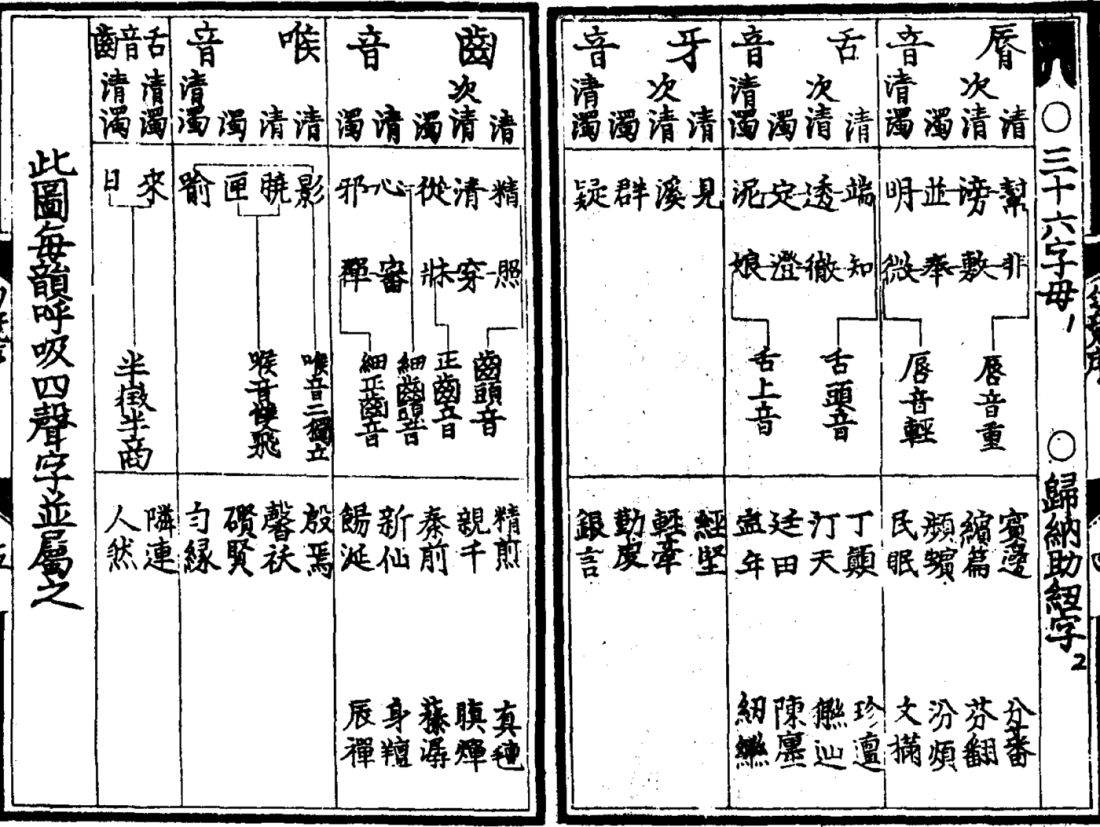
[See https://en.wikipedia.org/wiki/Rime_table#36_initials for more on this]
So, without further ado, here is the fundamental correspondence table between MC and Japanese initials, showing Chinese initial, 呉音, and 漢音:
| 幫 [p]・非 [f] | 滂 [pʰ] ・敷 [fʰ] | 並 [b]・奉 [v] | 明 [m]・微 [ṽ] |
| [p] → [ɸ] → [h] | [b] | [m] | |
| [p] → [ɸ] → [h] | [b] ; [m] before [ŋ] | ||
| 端 [t]・知 [ʈ] | 透 [tʰ]・徹 [ʈʰ] | 定 [d]・澄 [ɖ] | 泥 [n] ・娘 [ɳ] |
| [t] | [d] | [n] | |
| [t] | [d, z] ; [n] before [ŋ] | ||
| 精 [ts]・照 [tɕ, tʂ] | 清 [tsʰ]・穿 [tɕʰ, tʂʰ] | 従 [dz]・牀 [dʑ, dʐ] | 来 [l] |
| [s] | [z] | [ɽ] | |
| [s] | [ɽ] | ||
| 心 [s]・審 [ɕ, ʂ] | 邪 [z] ・禅 [ʑ, ʐ] | 日 [ɲ] | |
| [s] | [z] | [n] | |
| [s] | [z] | ||
| 見 [k] | 渓 [kʰ] | 群 [g] | 疑 [ŋ] |
| [k] | [g] | ||
| [k] | [g] | ||
| 影 [ʔ] | 暁 [x] | 匣 [ɣ] | 喩 (-) |
| -, [j] or [w] | [k] | [ɡ] or [w] | [j] or [w] |
| -, [j] or [w] | [k] | [k] | [j] or [w] |
(Adapted from https://en.wikipedia.org/wiki/Sino-Japanese_vocabulary; note that 来 [l] has been placed with the dentals for symmetry reasons)
A few quick observations on the differences between 呉音 and 漢音:
- In 呉音, the MC stops are perfectly preserved: voiceless and voiceless aspirated map onto voiceless, voiced stops stay voiced in Japanese; in 漢音, all three categories (清,次清,濁) now map onto voiceless stops, reflecting the loss of voicing in LMC
- In 呉音, the MC affricates merge into sibilants; less technically speaking: all ts-sounds become s-sounds; again voiceless stays voiceless and voiced stays voiced; in 漢音, the voicing distinction is lost and all ts-sounds now become voiceless [s]
- In 呉音, the MC nasals stay nasals; in 漢音, they become stops, unless the syllable ends in [ŋ] – a similar development can be observed in Hokkien Chinese
- In 呉音, [ɲ] becomes [n], in 漢音 it is [z]
The different treatment of voiced consonants explains a lot of the seemingly random variation of readings in Japanese:
| Ex.: | 神 | 大 | 地 | 分 (fan6) | 仏 |
| 吳 | jin | dai | zi | bun | butsu |
| 漢 | shin | tai | chi | fun | futsu |
In other words, whenever a word has a voiced MC initial, there may be a voiced initial in Japanese. If is voiceless in MC, it cannot be voiced in Japanese! How do I know if the initial was voiced in MC? Check if it is a 陽-tone in Cantonese (or Min or 吳)!
Note: Unfortunately, if it is a voiced initial you cannot tell whether the word is 呉音 or 漢音 just by looking at the characters, e.g. 神社 is Jinja and 神道 is Shinto. So, the first is Go’on and voiced, and the second Kan’on and voiceless. But at least now you know why :-). Also, note that the second syllable of each word is consistent with the first: both 社 and 道 are both voiced in MC, but come out as voiced /ja/ in jinja and devoiced /to:/ in shintou, matching the treatment of 神. At least you are getting the second half for free!
Before moving on, let’s do some worked examples:
- 公園 gong1-yuan2 in Mandarin. But remember that the “g” is not really voiced, this is just the pinyin convention for unaspirated [k]. We have not discussed finals yet, but from the table above you should expect something like kou-wen > kou-en. And that is exactly what it is.
- 時間 shi2-jian1 < shi2-gian1 in Mandarin, si4-gaan1 in Cantonese. The first character is voiced, so it could become shi or ji in Japanese. The second character is clearly voiceless, so it could be GO: ken or KAN: kan in Japanese (you will find out under medials how to tell). Actually, it ends up being a mix of both: ji-kan (Go’on + Kan’on) – mildly annoying, but luckily not the norm.
- 中国 zhong1-guo2, zung1-gwok3. Voiceless + voiceless, so this can only be shuu-koku, right? Close, but actually the initial in 中 is 知, which was a t-sound at the time (like still today in Hokkien Tiong-kok), not a ts-sound, and as you can see from the table t stays t and later becomes /ch/ in modern Japanese if followed by /i/, so /tiyuu/ > /chuu/. Unfortunately, there is another little complication called rendaku (連濁, connected voicing) which turns the second syllable into goku: Chuu-goku.
- 出発 chu1-fa1, ceot1-faat3. 出 is a ts-initial, so this should become shutsu, while fa(at) comes from an older puat (Hokkien hoat), so it should be shuts-pwatsu > shuppatsu which is exactly what it is.
- 茶 cha2, caa4, Hokkien: te5, so this one is clearly voiced and it is an original t-initial, as visible from the Hokkien reading. So, this should be dya > ja in Go’on, ta in Kan’on, and sa (喫茶店, kissaten) in To:’on but, catch 22, today’s pronunciation is an alternative, non-standard pronunciation (慣用音): cha.
So, I hope this gives you a first idea as to the usefulness (and limitations) of this method. You can, with near 100% certainty, explain why a pronunciation is the way it is. So, no more complete randomness. In terms of predictability it often works, but may also fail due to phenomena like rendaku, go/kan-mixing or other non-standard readings.
[To be continued in the next post]
文读 and 白读 – in European languages!
A little while ago, I wrote about the phenomenon of 文读 and 白读 in Chinese varieties, most notably Hokkien (Minnan). But actually, we have the same phenomenon in European languages, too!
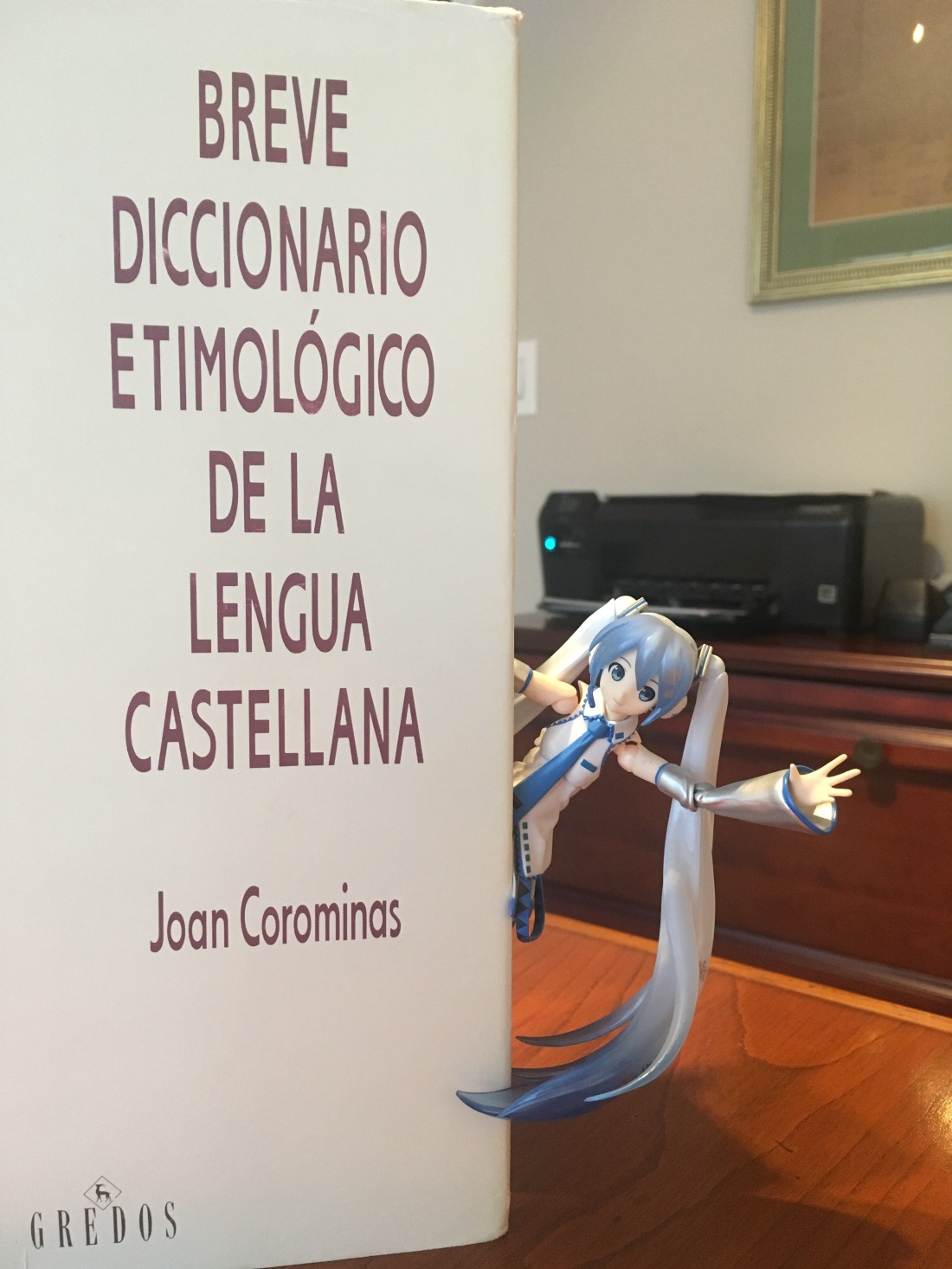
For example, in Spanish we have:
Latin: pleno- (满): lleno & plenitud
Latin: filio- (子): hijo & afiliación
Latin: oculo- (目): ojo & ocular
Latin: pecto- (胸): pecho & pectoral
Latin: audir- (闻): oir & audible
As you can see, the situation is 100% the same as in Chinese: the scientific, more cultured terms use a pronunciation much more like the Latin original, while the everyday words like son, eye, chest etc. show a much changed pronunciation from the colloquial.
And how about English? Actually, in English, the situation is even more complex, because you can have cognates from IndoEuropean times or Latin words imported more than once (e.g from Norman French and later again directly from scholarly Latin), giving rise to two different groups of doublets:
(1) Original English word and 文读 import from Latin (IndoEuropean cognates)
(目): eye & ocular (cf. German: Auge to see the change from c → g → y)
(耳): ear & auricular
(满): full & plenary
(夜): night & nocturnal
(2) Multiple imports from Latin – directly and via Norman-French
Latin: magister (君,主人) → mister, master, magister
Latin: factu- (事) → feat, fact
Latin: senior (老) → sir, senior
Latin: regali- (王之) → real, royal, regal
As you can see, the example of magister is just like 呉音、漢音、唐音 in Japanese. Just that we normally do not think about it, because we use an alphabet, so we do not have to remember to pronounce mister and magister differently.
